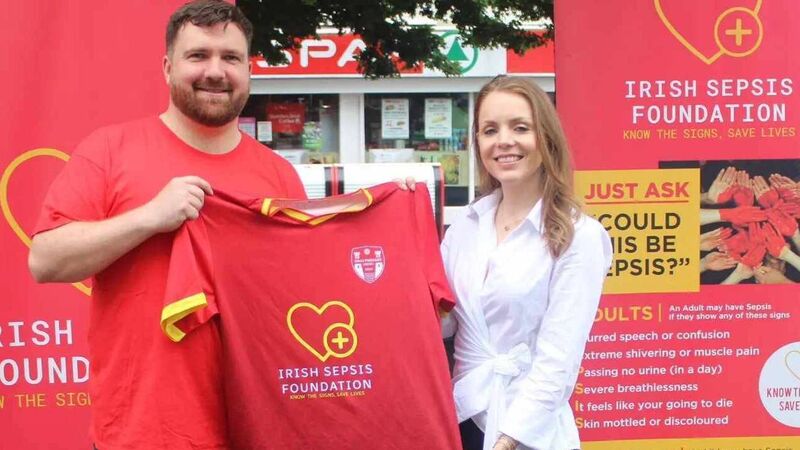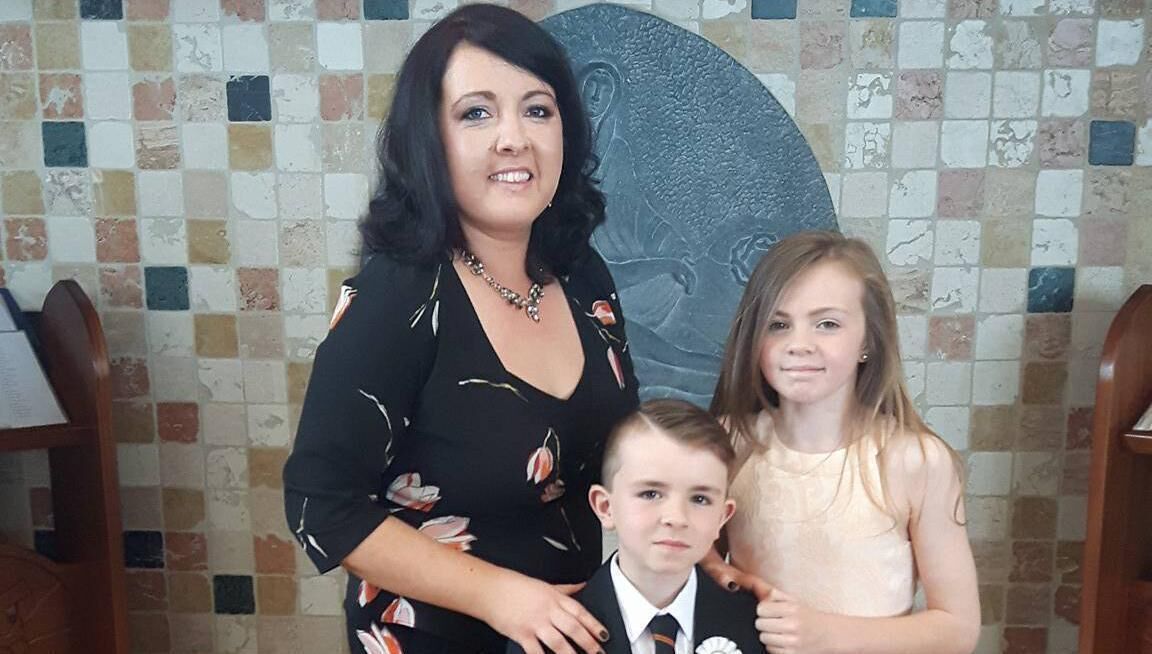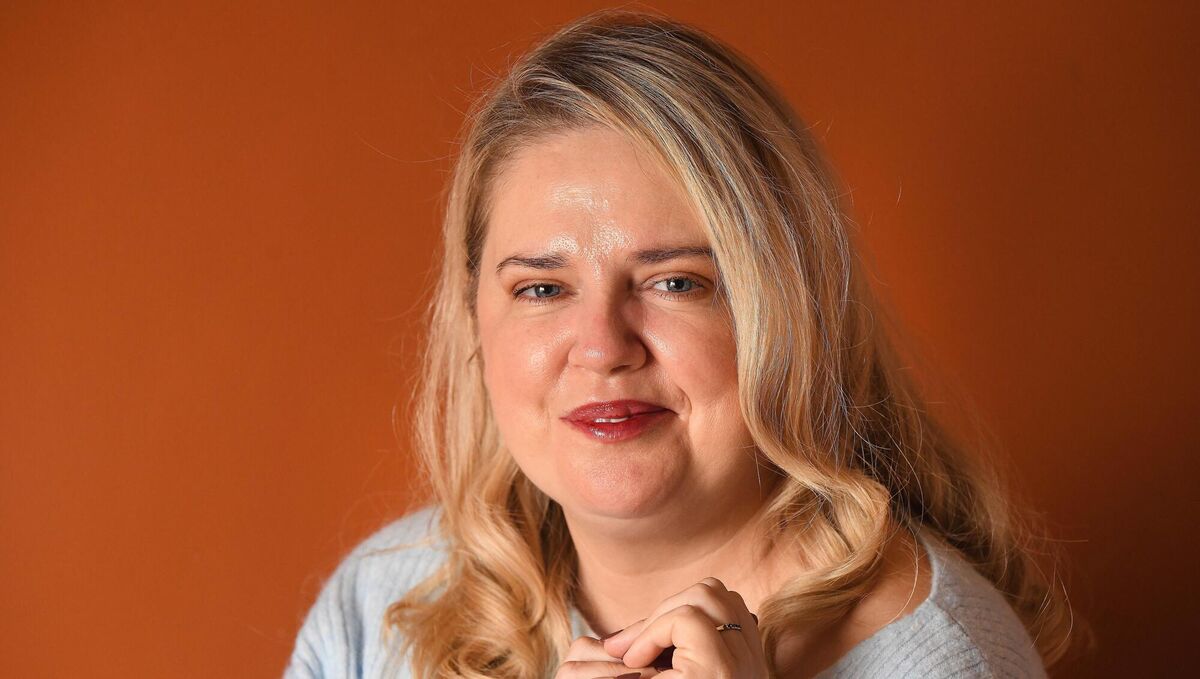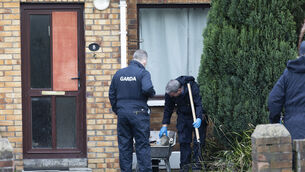New documentary serves as a reminder that sepsis can happen to anyone

James Corcoran with Irish Sepsis Foundation chairwoman Doireann O'Mahony; James volunteers with the Cork-based foundation and is its deputy chairman.
A Corkman who took part in a documentary on sepsis did it to keep his sister’s memory alive for her children.
Tracey Corcoran, 37, was a devoted mother of two who put a smile on everyone’s face.
She lived with a rare form of rheumatoid arthritis and an autoimmune condition, adult-onset Still’s disease (AOSD).
Her brother James recalls she also had two hip operations, powering through the recovery from both surgeries.
“In May 2020, when she had pain over that weekend, we knew something was going wrong when she started complaining because she would have toughed out a lot of things,” he said.
At first they thought it was to do with her illnesses but when her temperature climbed, she went to Southdoc.
By the early hours of Sunday morning, the family called an ambulance for her at home in Togher.
“The paramedics thought it was maybe gastroenteritis but unfortunately it wasn’t. We didn’t have a clue about sepsis then, I couldn’t have told you the first thing about it,” he said.
“Later, when I was searching online, there was hardly anything about it then in Ireland.”
Tracey was taken to Cork University Hospital and treated in the intensive care unit (ICU).
“We were not allowed into the hospital, we were confined to phone calls. We weren’t allowed up there until we knew things were going wrong,” he said.
“We were just speaking with the nurses every day at 11am and 5pm for any updates.”
"Tracey was alone, and who knows what might have happened, would she have rallied with visitors?
“It’s hard, she was in ICU and there was nobody there with her. The isolation made it 10 times more difficult and I suppose it’s a hard chapter to close.”
Over the next four weeks she seemed to improve at times. Then tragically on June 20, Tracey died in hospital, leaving her partner and children devastated.
“She was a devoted mother first and foremost, she was her children’s biggest fan,” James said.
“There’s a hole in our heart and I don’t think it will ever be filled. She was the type of person that kept our family together, she was the glue. And she put smiles on everyone’s faces.”

James now volunteers with the Cork-based Irish Sepsis Foundation and is its deputy chairman.
“Awareness is key,” he said.
“Don’t wait until sepsis comes to your first door before educating yourselves.”
He called on people to learn the signs as early diagnosis can be crucial.
“The last thing you want is to have a situation like my own and have sepsis come to your front door and not know any details about it.
“Who know if we had known the signs, there may have been a different outcome.
“Now we’re left scratching our heads, a would-have, could-have, should-have scenario.”
James is one of the moving interviews featured in a new documentary, .
Tracey’s daughter Sophie is just 18 now and her son William is 16.
“I suppose the reason we do these things is to have a lasting legacy for her kids to remember her by,” James said.
“Hopefully the documentary will be picked up by national stations, and I’ll be a part of that.
“More importantly my sister will be a part of it, and her son and daughter will have something to remember her by.”
Documentary director Kim Wyse had her own frightening brush with sepsis when she was 23 weeks pregnant in 2016.
A frantic rush to hospital and a four-week stay for treatment came after an abscess in her stomach caused by Crohn’s disease burst, she recalled.
“There was a lot going on,” she said.
“I was so ill. I was in ICU for some time and we were told to expect labour to be imminent. They said if that happened there was not much they could do except make the baby comfortable.”

Her daughter was eventually born at 34 weeks old after successful treatment for sepsis and its consequences.
“I wasn’t familiar then with the signs of sepsis, but I know now I had decreased urine output, tachycardia, and high temperature,” Ms Wyse said.
She added: “I collapsed at home that morning when the abscess burst, I was brought by ambulance to hospital. My team there were so on the ball.”
They immediately tested for sepsis.
“I was just very lucky.”
She stayed in Tallaght hospital for almost a month, leaving her husband and three older children at home.
“It was really difficult to deal with, I didn’t really know at first what was going on,” she said.
“I do remember two doctors at my bedside and one saying to the other ‘we don’t need another Savita Halappanavar'. I remember thinking to myself I’m in trouble.”
Ms Halappanavar died in 2012 having gone to Galway hospital experiencing a miscarriage. She was denied an abortion, with severe sepsis recorded as the cause of her death.
Ms Wyse said she was delirious at the time, but that comment stood out.
“I knew more about that name than I did about sepsis,” she said.
The impact of those traumatic weeks lingered for many years.
“Sepsis can be tragic but even for survivors and their families it is difficult,” she said.
“I know with my own family there was a domino effect. I had sepsis but it affected my children, my husband, my parents and siblings. It is traumatic looking at your loved one with tubes and wires, critically ill.”
She added: “I was out of it for most of my time in the ICU but they weren’t. It affected them terrible. We had no supports.”
Her children were 12, eight, and two at the time.
“Even afterwards, the sepsis really really affected me,” she said.
“I was tired all the time, I had to walk with a walking frame. I was diagnosed with PTSD, anxiety, depression. I left home as one person and came back as another.”
Kim is also now a volunteer for the Irish Sepsis Foundation, which is supporting the documentary.
“I’ve often had people say to me ‘you had sepsis, why do you want to work around people who had sepsis?’ but it’s very simple,” she said.
“It’s about saving other families from going through what mine did.”
Her hope now is the documentary will be picked up for wider distribution so the eight stories can be shared with a bigger audience.
“This is a one-off but I would love to think someone (a broadcaster) might pick it up,” she said.
“I think this is worthwhile, we’re trying to educate the public on the signs and symptoms of sepsis.”
The documentary screens for the first time on October 23 at the Odeon Cinema in Point Square, Dublin. Free tickets are available through the Irish Sepsis Foundation on Eventbrite.
The foundation said the stories in the documentary are a reminder sepsis can happen to anyone, anywhere, at any time.
The most recent HSE sepsis report shows 15,722 cases in 2023 including septic shock.
There were 260 pregnancy-related cases of sepsis and none of these women died. Some 2,891 children were admitted to hospitals with sepsis.
- An infection can trigger sepsis in any part of the body;
- It can be life-threatening and requires prompt medical attention;
- The immune response triggered by the infection can lead to changes in the body including organ damage.
- Fever or low body temperature;
- Rapid breathing or shortness of breath
- Rapid heart rate;
- Lethargy or extreme fatigue;
- Irritability or altered mental state;
- Poor feeding in infants;
- Decreased urine output;
- Skin that is cool or clammy;
- Pale or mottled skin;
- Abdominal pain or discomfort.
- Temperature over 38°C;
- Rapid heart rate or breathing;
- Lower abdominal or pelvic pain;
- Foul-smelling vaginal discharge;
- Pain or tenderness in the uterus or surgical incision site;
- Nausea and vomiting;
- Confusion or disorientation;
- Decreased urine output;
- Skin rash or redness, particularly around wounds.













![Johnny_Stephens_Photography-02-425A6831-Edit[1].jpg Restaurant review: The Ivy Asia is an assault on all five senses — I hated it](/cms_media/module_img/9752/4876311_6_teasersmall_Johnny_Stephens_Photography-02-425A6831-Edit_5b1_5d.jpg)
